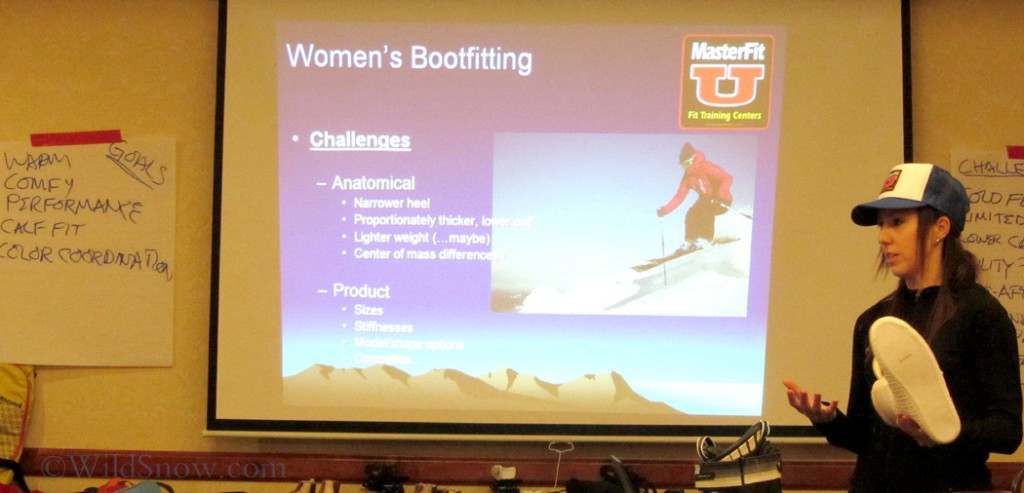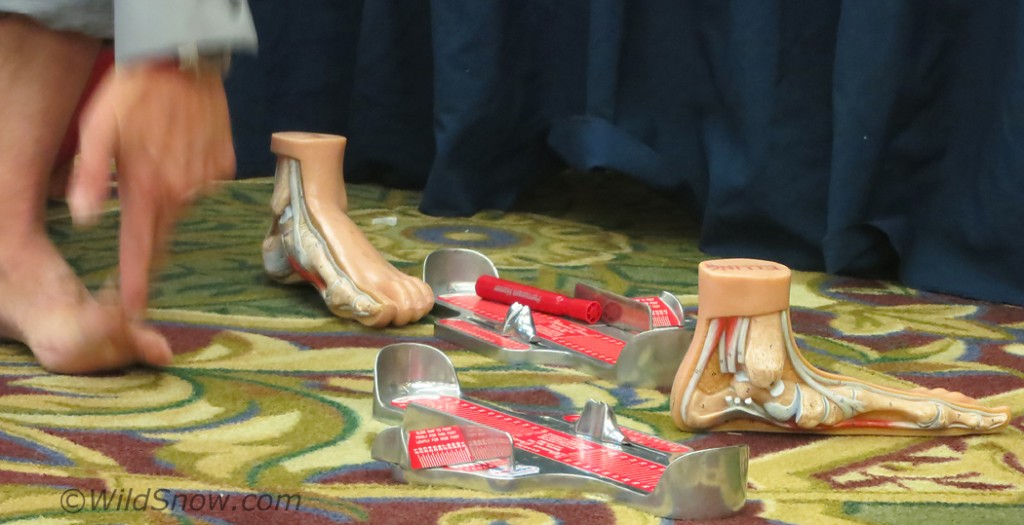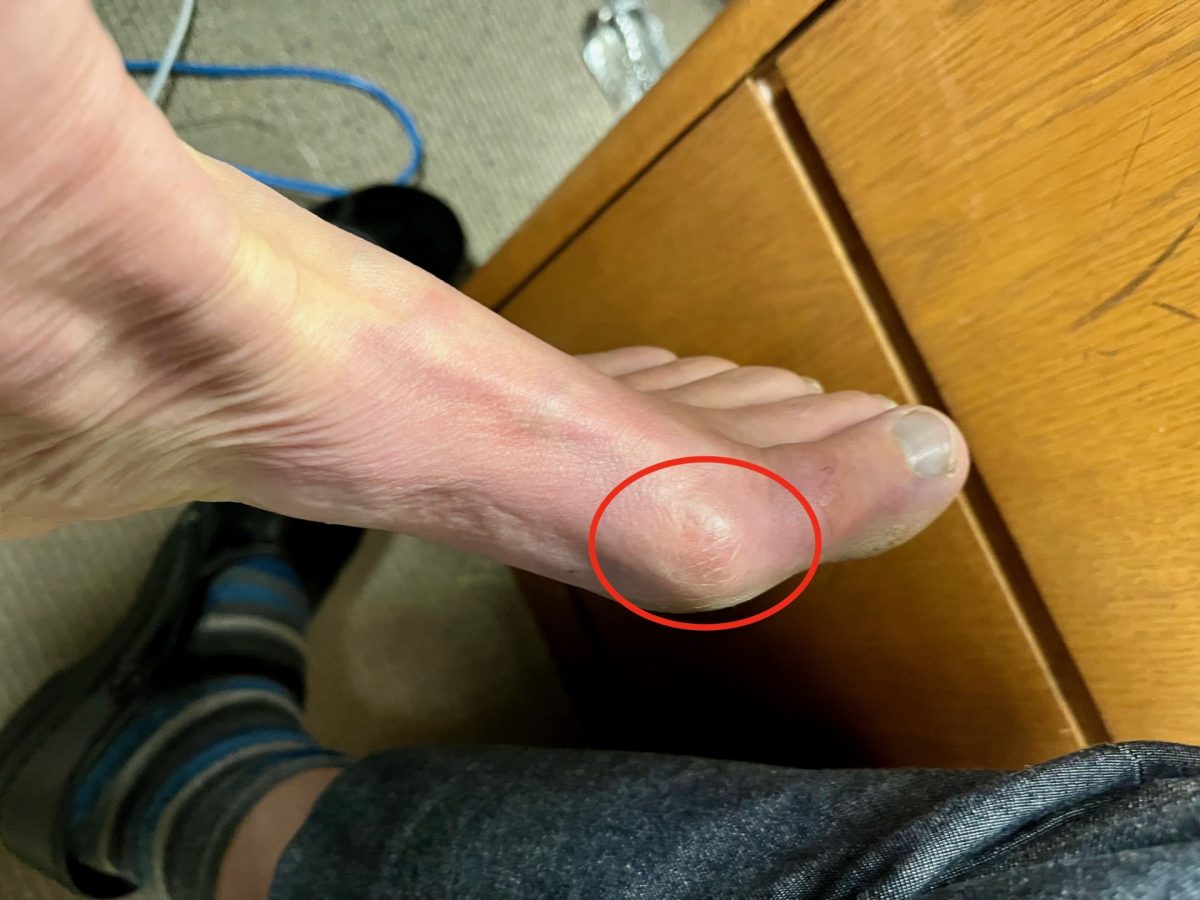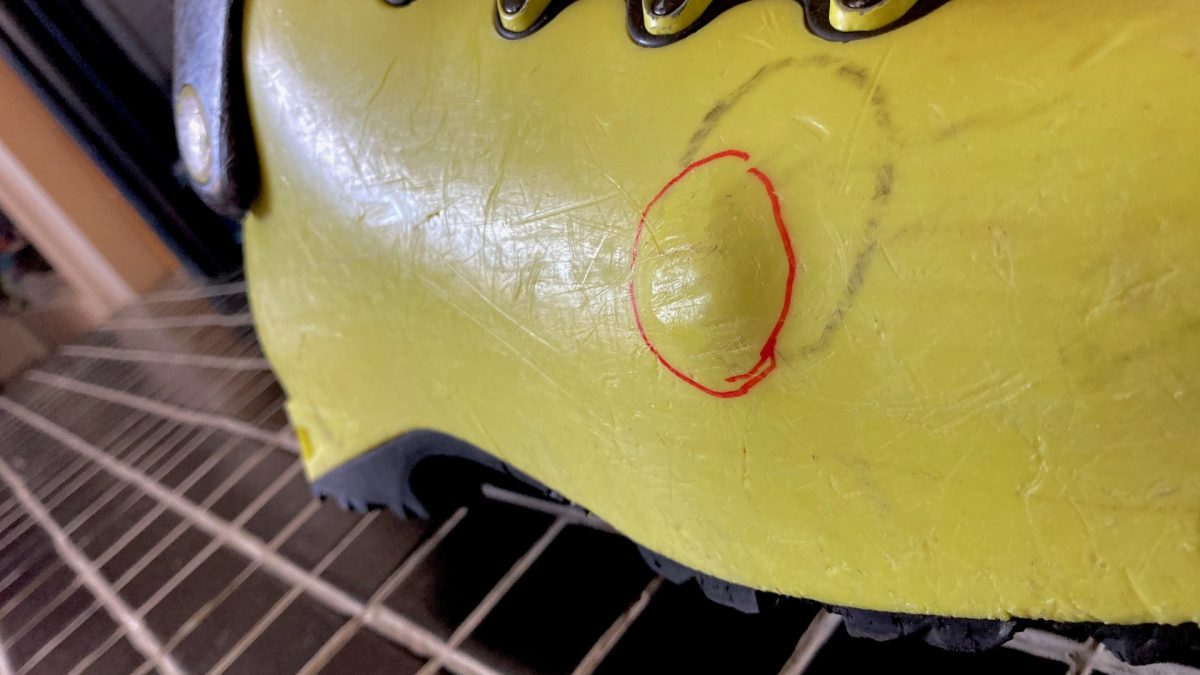Proper boot fit can be a tricky thing. And for some women’s feet, the quest for an ideal fitting backcountry touring boot can be frustrating. In this reposted piece from Lisa Dawson, we get some keen advice about her experience dialing in the fit.
This piece is supported by our publishing partner Cripple Creek Backcountry.
There’s quite a bit of analysis that goes into a good fit. The goal is to comfortably stabilize the foot in the ski boot. After that, you adjust all the boot’s biomechanical angles (cuff lean, side cant, ramp angle, etc.) to work with the skier’s body. With each training session delving deeper and deeper into the intricacies of the process, my respect grew for the master boot fitter.
I learned there are three core areas of focus:
1) the boot environment (size, angles, width)
2) the foot (flexibility, arch, issues such as bunions, narrow heel or hammer toes)
3) Ankle joint range of motion and toe dorsalflex
These three seemingly simple concepts got complicated quickly with discussions of biomechanics, anatomy, alignment, assessment, footbed construction, and shell and liner modifications. On top of that, many women face additional issues.
Complexities of Female-specific Boot Fitting Explained
Although many women ski tour in Europe and North America, companies produce a much smaller percentage of truly women-specific ski boot molds. Perhaps that’s because of the male-dominated boot design and manufacturing culture? Most often, women’s ski boots are smaller sizes of men’s lasts. Given the differences in our anatomies, women often have challenges finding the proper fit off the shelf.
Getting the right size boot shell is critical. For backcountry skiing, fit is measured by placing your bare foot in the boot shell without the liner, with the toe touching the front of the shell.
Here are the fit basics (for length) according to a recent article by Doug Stenclik:
“Boot fitters typically use a fit stick, but if you are trying this at home and don’t have this tool, stack two fingers on top of each other (or roughly 1.5 – 2 cm of space), your stacked fingers should fit between your heel and the shell. This spacing goes to 1 cm or pretty much as tight as a skier can handle for performance fits.”
Making the Fit Right
Some things to be mindful of when being fit: Women typically have larger lower calves, narrower heels, and a lower center of mass than men. Thicker calves can cause a high cuff to bite and pitch you into an excessive forward lean that hurts your knees and messes up your ski technique. Conversely, a lower center of mass can make it harder to get forward on skis — but excessive forward lean is not necessarily the best way to achieve that. Tendencies for knock knees require attention to the side-to-side cuff angle that’s adjusted with cant rivets or custom padding on one side of the lower leg bone.
On our feet often, we have all sorts of causes for bunions, higher insteps, and tight tendons. Solving your specific fit issues may take some elbow grease and specific tools or some inelegant and simple use of the boot’s closure systems. For example, like a crazed dentist during the seminar, I ground a large divot in a shell to accommodate a bone spur.
The grinding is a more involved process, but a good boot fitter will have the skills and tools to punch a shell using heat and press (which can make room for a bone spur), or they can do as I did, grind away like a dentist. On the simpler side, shiny buckles are more than bling. The top buckles (and, if you prefer, the power strap) should be buckled securely for performance. The bottom buckles, however, can be closed with a lighter touch, easing numbness caused by a high instep. Still, many new 1000g class boots use BOA-type closures for the lower shell. If you literally cannot dial in a secure fit and reduce the numbness, by all means, consult a boot fitter.
An interesting tidbit I gleaned from the seminar: shops tend to stock only of few pairs of boots on either end of the sizing chart. Therefore, if you are a woman with small or big feet, availability can be another challenge if you don’t get your boots at the beginning of the season.
Cold Feet
A good-fitting boot with the right sock will help maintain circulation and comfort. The boot liner and footbed should provide the proper fit, meaning your foot isn’t swimming in the boot, so a light sock is recommended rather than a thick comfy sock. If you are on a multi-day outing in colder temps, one fresh pair of socks for each day of touring is important since salt and minerals from sweating will inhibit the performance of a technical ski sock. And when driving to a trailhead, aim to put on your ski socks right before you start to ski: perspiration during the drive increases the chance of getting cold feet in the backcountry.
If you are taking it to the next level of warmth, or you cannot solve the cold feet problem, there are other steps to take. Foot warmth can be enhanced by exterior neoprene boot covers, heavier liners, battery-operated heated insoles, and heated socks.
During one session, a MasterFit University instructor pulled out the stock footbed of a new ski boot; it was flat as a pancake. Most design efforts focus on shell and liner construction. By extension, most stock footbeds are generic and won’t give you the comfort or support you need. At the least, It’s a good idea to replace it with an off-the-shelf insole that can be ground down or molded to fit your foot and the liner. The goal is to stabilize the foot in the boot. A sloppy fit causes blisters and sluggish responsiveness. A good fit will have your foot encased in a warm handshake.
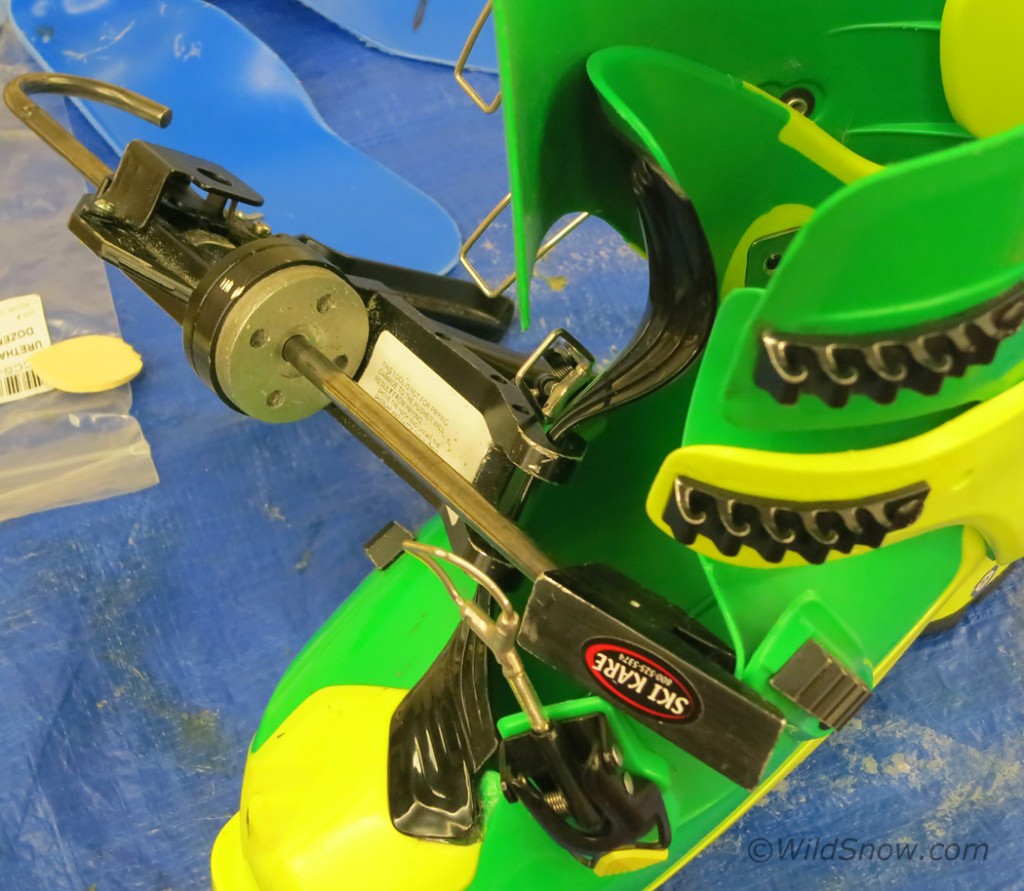
At Masterfit University, I noticed Lou salivating over a number of tools of the boot fitting trade. This one, he said, was “what we’ve really been needing.” If he works on my boots, I’ll buy him anything.
As you can surmise, there’s a lot involved with getting a boot to fit well. Attending MasterFit University helped me learn about my feet and their issues, and the knowledge will help me. But I’ll still work with a professional.
It pays to have them fit right if you rely on a single pair of go-to backcountry boots. And by the way, be ready for the first big storm and treat yourself to a few pairs of fresh, new socks. Ultralight wool, preferably.
Shop for fresh warm socks, heated insoles, and heated socks.
WildSnow Girl, Lisa Dawson, is the luckiest girl in the world. Also known as Mrs. WildSnow.com, she tests whatever gear she wants. She gives the WildSnow family of websites the feminine voice.

